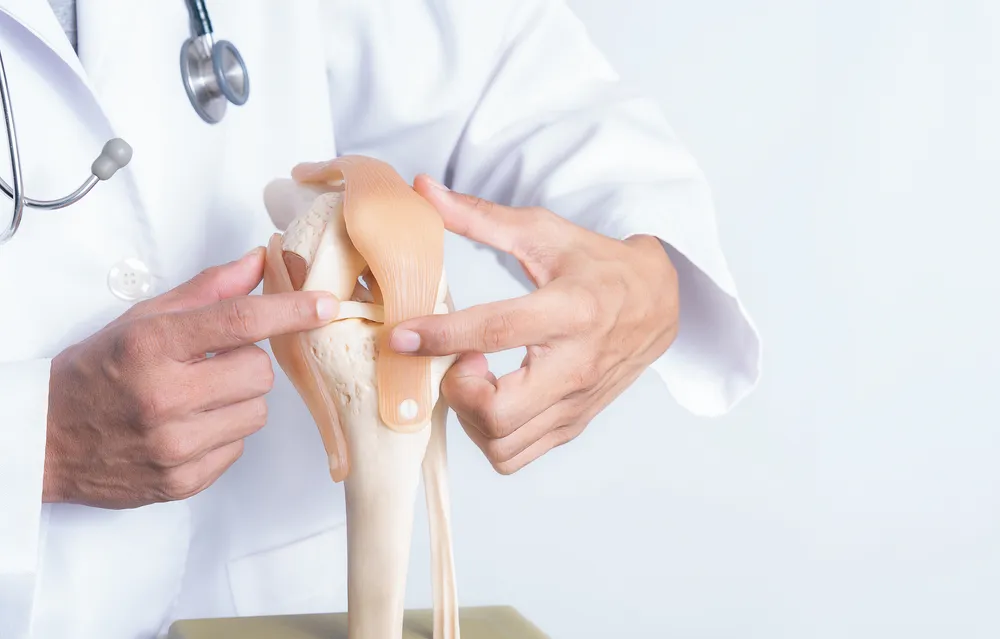Deadly Killers at our Fingertips: Examining High-Touch Surfaces and Pathogens
In the wake of a global health crisis, awareness of high-touch surfaces and their potential role as vectors for pathogens has significantly increased. At LifeCare...

Joint pain and mobility issues can significantly impact a person's quality of life. Fortunately, medical advancements in joint replacement surgery have revolutionized orthopaedic care, providing a new lease on life for those suffering from chronic joint conditions.
Joint replacement surgery involves replacing a damaged or worn-out joint with an artificial implant made from metal, plastic, or ceramic materials. The procedure is primarily performed to alleviate pain, improve joint function, and enhance overall mobility. Joint replacement is commonly performed for knees, hips, shoulders, and elbows, providing relief to patients suffering from arthritis, degenerative joint diseases, and severe joint injuries.

The field of joint replacement has witnessed significant innovations that have elevated the success and safety of the procedure. Let's explore some of the groundbreaking advancements that have revolutionized joint replacement surgery:
Traditional joint replacement surgeries were characterized by larger incisions, often resulting in longer recovery periods and heightened patient postoperative discomfort. However, a remarkable transformation in orthopaedic care has been ushered in with the advent of minimally invasive techniques in joint replacement.
Smaller Incisions, Greater Advantages
Minimally invasive joint replacement surgery is a game-changer in the field of orthopaedics. Unlike traditional approaches that require extensive incisions, minimally invasive techniques involve smaller incisions, often only a few inches long. These tiny openings pave the way for numerous advantages, significantly improving the patient experience.
Faster Healing and Recovery
One of the most significant benefits of minimally invasive techniques is their faster healing time. The reduced tissue trauma and smaller incisions enable the body to heal more efficiently. Patients undergoing minimally invasive joint replacement typically experience shorter hospital stays and quicker rehabilitation. They can return to their normal activities sooner, regaining their mobility and quality of life at an accelerated pace.
Minimal Scarring:
The smaller incisions in minimally invasive joint replacement result in minimal scarring compared to traditional surgery. Smaller scars are cosmetically appealing and contribute to patient satisfaction and improved self-esteem.
Lower Risk of Infection:
The reduced tissue trauma and shorter incisions in minimally invasive joint replacement surgery lead to a lower risk of infection. The smaller wounds are easier to care for and are less susceptible to complications, promoting a safer and more successful recovery.
In the ever-evolving landscape of medical technology, robotic-assisted joint replacement surgery is a remarkable advancement in orthopaedic care. This cutting-edge approach merges the precision of state-of-the-art technology with the expertise of skilled surgeons, offering advantages for patients seeking relief from joint pain and improved mobility.
Precision Redefined
Robotic-assisted joint replacement surgery introduces precision previously unattainable through conventional means. By utilizing robotic arms controlled by the surgeon, this approach enables unparalleled accuracy in the placement and alignment of joint implants. The robotic system translates the surgeon's precise movements into meticulous actions, resulting in a more reliable and successful surgical outcome.
Enhanced Implant Placement
The high degree of precision in robotic-assisted surgery ensures optimized implant placement. Proper alignment and positioning of joint implants are crucial for their long-term success and functionality. With robotic assistance, surgeons can achieve an exact fit for the implant, reducing the risk of complications and enhancing joint function.
Advancements in material science have led to the development of highly durable and biocompatible implant materials. Modern joint implants are designed to replicate the natural movement and function of the joint, providing a seamless and comfortable patient experience. These advanced materials also contribute to the long-term success of joint replacements, allowing patients to enjoy pain-free movement for many years.
A Holistic Approach to Healing
Innovative rapid recovery protocols leave no stone unturned in the quest for optimal postoperative healing. Beyond the surgical procedure, these protocols recognize that comprehensive care is essential for successful outcomes. As such, they incorporate multiple facets of care into a cohesive strategy that addresses the diverse needs of patients.
Targeted Pain Management
Effective pain management is a cornerstone of rapid recovery protocols. By employing advanced pain management techniques, patients experience minimal discomfort, fostering a more positive and comfortable recovery journey. This is achieved through medication, nerve blocks, and other cutting-edge interventions, ensuring pain is controlled and manageable.
Innovations in joint replacement surgery have transformed the landscape of orthopaedic care, offering hope and relief to individuals experiencing joint pain and limited mobility. LifeCare Hospitals stands at the forefront of these advancements, delivering the highest standard of joint replacement surgeries led by the top Orthopedic Doctors in Migori. Our commitment to excellence and patient-centred care, combined with state-of-the-art technology and techniques, empowers patients to regain pain-free movement and embrace a life filled with joy and vitality. If you or your loved one is seeking solutions for joint pain, trust in the expertise and innovation at LifeCare Hospitals, Kenya's Top Private Hospital, to pave the way for a pain-free and active future.
Partager cet article